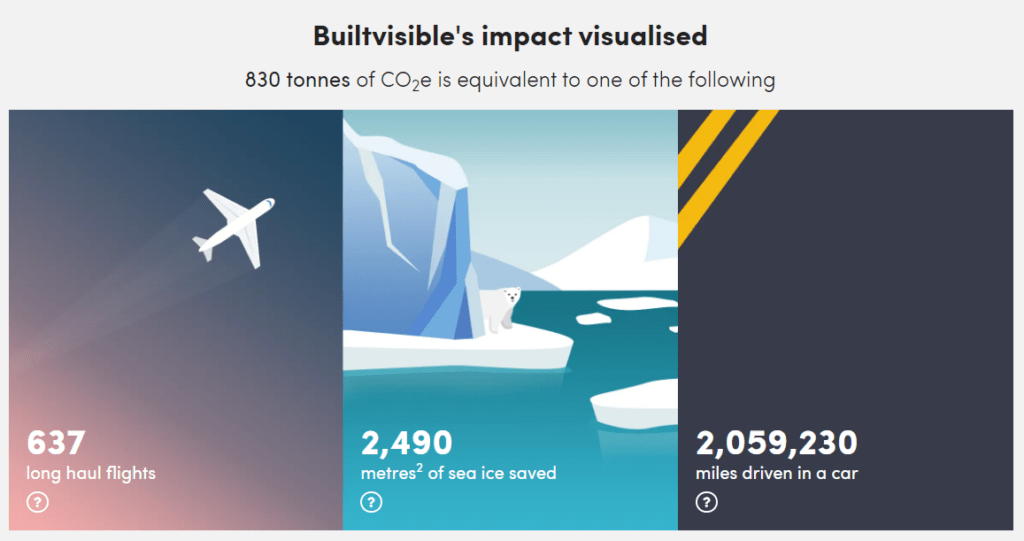Maintain a human touch
As more and more roles are being replaced by bots, human interaction is becoming increasingly valued. Empathy simply cannot be replaced by a machine.
As a result, humanity has become a premium aspect of brand identity. Mintel refers to this as ‘human-as-premium,’ where the presence of genuine human interaction is not only desirable, but also elevates the perceived quality of a brand.
There are many ways that brands can emphasise their humanity. One of these is to spotlight their experts – the real people that are the lifeblood of the business.
Tiffany & Co does a great job of this with their ‘meet Tiffany’s diamond master artisans’ content. Here they show some of the experts behind their world-class diamonds. It’s not only the use of quotes that works well, but also the personal photos and mentioning of their staff by name.

This also works in the B2B space. Rentokil, a commercial pest-control provider, does this on their website too, to good effect. They have a ‘meet our experts’ site section that shows off staff members in a range of different roles. There are several photos of each person, with a small amount of text to describe their role and where they’re based. This makes each member of staff feel relatable. Everyone looks happy in their work, which can improve perception of the company as a result.

These two examples demonstrate how showcasing the people behind-the-scenes can help a brand to feel more genuine, thereby increasing user trust. If you’re going to do this, be sure to steer away from stock imagery and only use genuine photos or footage of your staff. Not only do authentic images land better with users (authenticity sells!) but the use of original photos is a mark of ‘high originality’ in Google’s Search Quality Rater Guidelines. This contributes to a high quality score for page content and is exactly the type of thing that Google wants to reward brands for.
Build community
Despite the fact we’re more plugged in than ever, people are feeling increasingly isolated. As a result, consumers are seeking more ways to experience real connection. Fostering a sense of community and providing users with a sense of belonging can really set your brand apart.
Spotlighting customer stories and highlighting reviews on your website is a great way to achieve this. This isn’t simply about having a testimonials section on your website: focus on the stories of individuals (not faceless companies), talking through the challenges they faced that your brand was able to solve.
Bravissimo, a lingerie provider, does a wonderful job of this with their ‘your stories’ section. What works well is that they include stories from a range of women, which helps to capture the breadth of their audience. This means individual customers are more likely to relate to one of these stories and therefore feel a part of their community. They also use a range of media – photos, video, long-form content and quotes – which helps to bring these women to life.
If you’re in the B2B sector, don’t think that this doesn’t apply to you. People buy from people, so it’s just as important to focus on the human element. Even more so, in fact, as so few companies get this right. Saleforce has a site section dedicated to customer success stories. Even when they’re spotlighting a company, they focus on the people within that company to tell the story of their success, for example in their Santander case study:

This type of content not only builds trust but also encourages customer loyalty, as people are more likely to continue to engage with brands that they feel a part of, and whose audience they can relate with. Feeling a part of something – instead of just feeling like another customer – is key.
In addition, including success stories that are humanised in this way contributes to all components of Google’s E-E-A-T: experience, expertise, authoritativeness and trustworthiness. Demonstrating all four of these elements puts your website in a strong position to perform well in Google’s search results.
Emphasise longevity
As the pace of change continues to accelerate, consumers are increasingly drawn to brands that offer a sense of continuity. By emphasising your brand’s history and tradition, you can position your company as a stable presence in an uncertain world.
In telling the story of your brand’s journey, consider where you can highlight milestones and achievements that reinforce your brand’s enduring presence. If possible, refer to the individuals that contributed to your brand’s long-term success, as opposed to simply referring to the company as a whole. Again, try to include photos, especially of people, as this helps your audience connect with your brand at a deeper level.
Barbour has a page on the history of the brand which includes a timeline dating all the way back to 1984, when the company was founded. It features photos not only of the individuals that had a real impact on the brand’s heritage, but also of the old catalogues, magazines covers and adverts – some of which date back as far as 1908. The key here is that Barbour is not only able to demonstrate the brand’s rich history, but also its relevance to modern times, highlighting current partnerships and charitable initiatives both in the past and in the present day.

Lego is another example, although they take this several steps further with an entire site section dedicated to the company’s history.
Once again, not only does this have the benefit of building trust with users, but with Google too. This contributes to Google’s E-E-A-T signals, particularly ‘experience’ and ‘expertise’. In addition, by providing rich information that Google’s AI Overviews can use, you have more control over how your brand is presented online. In Barbour’s AI Overview, the brand’s long history and the fact it’s family-owned have been highlighted:

If your brand is fairly new and is unable to emphasise a long heritage, don’t worry. Focus instead on highlighting its traditional values. This helps to create a sense of durability and longevity for the future that customers can feel reassured by.
Show tangible climate impact
With growing scepticism surrounding corporate environmental initiatives, it’s more important than ever for brands to be transparent about their sustainability efforts. It’s far too easy to make empty promises; instead, consumers want to see real, measurable impact.
Use your website to clearly communicate what your brand is doing to help the environment, and be sure to provide clear evidence of the impact those actions are having. Make sure you avoid using jargon that customer’s might struggle to understand – you don’t want them thinking you’re hiding behind corporate-speak.
Marks Electrical has a dedicated site section which outlines how they’re doing their bit for the environment. They use photos, simple bullet points and easy-to-understand language to communicate their impact in a way that’s simple and unambiguous.
If you’re not a big corporate company and you don’t have the means to make an impact on a wide scale, there are still plenty of platforms that enable you to do your bit. In partnership with Ecologi, Builtvisible has planted over 10,000 trees, offset carbon emissions and supported global projects focused on renewable energy, conservation, and sustainable agriculture. On top of all this, their platform helps us to quantify our climate impact in a way that’s easy to understand:

If you’ve faced challenges in reducing your environmental impact, be upfront about it. Riverford, who deliver organic fruit and veg boxes, speak honestly about consumer demand for produce to be available year-round, and the compromises they have to make as a business between growing out-of-season produce in the UK versus importing produce from abroad.
This transparency contributes to the ‘trust’ factor of E-E-A-T. Therefore not only does it demonstrate to customers that they’re genuinely committed to making a positive difference, but it also improves Google’s perception of the quality of your brand.
Empathise with your audience
Empathy is a powerful tool in building brand trust. Users want to know that the brand they’re interacting with genuinely cares, and you can do this by creating content that addresses their concerns and needs. This is an easy way to stand out in a world where content is increasingly AI-generated and impersonal.
Provide valuable information that answers your audience’s questions and offer reassurance to position your brand as a trusted advisor. Whether you do it through blog posts, FAQs, or detailed guides, ensure that your content is both informative and empathetic, meeting your audience where they are and offering solutions to their challenges.
This is important to Google as well. Following the March 2024 Core Update, the amount of low-quality, unoriginal content in search results decreased by 45%. This reflects a big drive from Google to keep low-quality AI-generated content out of the search results. Therefore focusing on providing content that’s genuinely useful for your users will protect your site from future algorithn updates.
Spamedica, a provider of cataract surgery, does a fantastic job of this with their patient information. It’s extremely comprehensive, detailing every step of the patient journey from referral to post-treatment. Yet the content is also written in a way that’s very accessible, clearly answering key patient concerns at the top of pages so that patients can feel immediately reassured:

Remember, it’s not just what you write but how you write it. Pack your content with personality and warmth (if that aligns with your brand tone of voice). Spamedica’s eye care content is so clearly written for humans, by humans:

To wrap up
Focusing on building brand strength is a win-win: not only do you create loyal fans out of your customers, but you also boost your SEO performance. If you’d like to see how Builtvisible can help you boost your brand’s credibility in the ways outlined above and more, don’t hesitate to get in touch.

